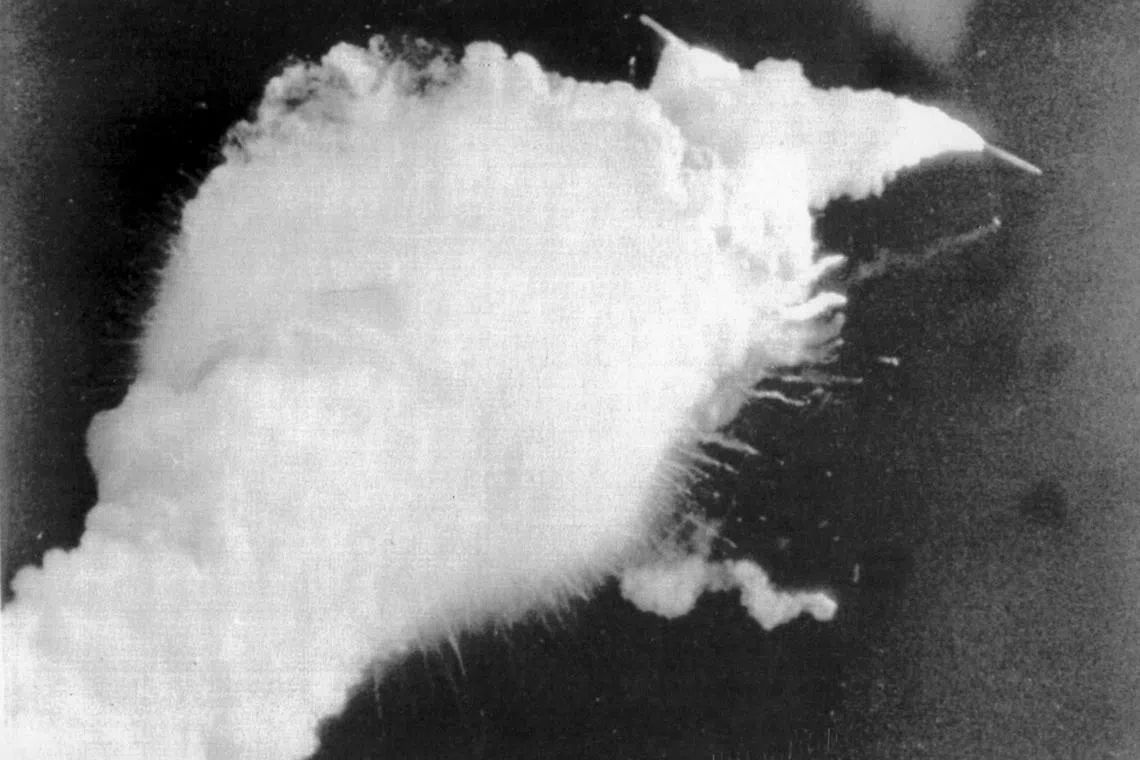Divers find Challenger space shuttle wreckage off Florida coast
Sign up now: Get ST's newsletters delivered to your inbox

Divers contacted Nasa after spotting a large modern object covered in sand at the bottom of the ocean.
PHOTO: UPI
Follow topic:
MIAMI - Divers from a documentary crew looking for the wreckage of a World War II aircraft off the coast of Florida have found a 20-foot (6m) section of the space shuttle Challenger, which exploded and broke apart shortly after its launch in 1986, the National Aeronautics and Space Administration said on Thursday.
The divers contacted Nasa after spotting a large, clearly modern object mostly covered in sand at the bottom of the ocean and bearing the shuttle’s distinctive tiles, the space agency said.
“This discovery gives us an opportunity to pause once again, to uplift the legacies of the seven pioneers we lost, and to reflect on how this tragedy changed us,” Nasa administrator Bill Nelson said.
The divers were exploring the sea floor off Florida earlier this year as part of a History Channel documentary called The Bermuda Triangle: Into Cursed Waters. It is about the swath of the Atlantic Ocean long subject to myths surrounding the supposed supernatural vanishing of planes and ships.
They were looking for the wreckage of a PBM Martin Mariner Rescue Plane that disappeared without a trace on Dec 5, 1945, while searching for five US Navy torpedoes that had also gone missing that day. The find marks the first time in 25 years that a piece of the Challenger has been located.
Mr Nelson said Nasa was trying to determine whether to recover the wreckage and “what additional actions it may take regarding the artefact that will properly honour the legacy of Challenger’s fallen astronauts and the families who loved them”.
The Challenger erupted into a ball of flame 73 seconds after lifting off from Kennedy Space Centre on Jan 28, 1986. All seven crew members were killed,
Investigations blamed the disaster on compromised O-ring seals on an external fuel tank, worsened by unusually cold temperatures.
It remains one of the worst disasters in the history of the US space programme.

